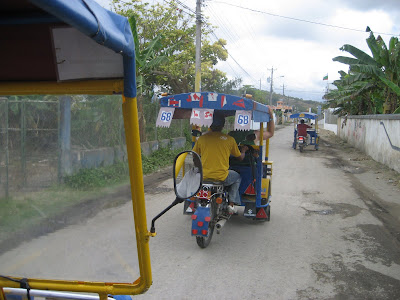The above was the official title of the schedule we got for the U of I program’s trip to an indigenous community in the Andes, the famous Cotopaxi volcano, and the gorgeous Quilotoa Lagoon. And yes, it was in all caps, and yes, I felt the need to replicate that.
So last Friday, October 19, those of the U of I group that could make it (many were sick or had a Saturday class :-() hopped on a trusty yellow bus with our resident director, Maria, and her totally cool assistant, Erika. Since we were a smaller group, the bus was smaller than our past trips so we were somewhat cramped, to say the least, but we had an awesome driver who played good music, so that made a big difference.
We rolled out from USFQ around 2:45 Friday afternoon and headed toward the province of Tungurahua. After lots of driving (and of course snacking/sleeping/singing) we arrived in pitch blackness to a community of the Huasalata people, in the land of the Salasacas. (the last part is translated from my itinerary which is in Spanish and that’s why this sounds like the beginning of a legend…)
Anyway, we piled out of the bus and climbed to the second floor of the Hostal Inkahuasi. Megan and I claimed the U of Iish room. Well, I called it that since the bed covering was orange and blue. I-L-L!
Then we all headed down to the community room where a bunch of the people of the community cooked a DELICIOUS dinner for us…soup, choclo con queso, chicken, aba, mote…sorry I only know the Spanish words for some of the food.
We also got to talk with the owner of the hostal who built the hostal himself which was incredibly impressive. I also got to talk with his daughter, Paulina, who could have been anywhere from 14-25 years old and was really welcoming.

Some local musicians playing traditional Andean folk music for us in the hostal
After dinner, some men of the community played some Andean folk music for us, and some of the girls showed us a traditional dance. And then…they got all of us to dance.

This is so much harder than it looks. Trust me.
Well, I thought the dance looked fairly straight-forward, but when I got up to try it, I amused the community members and the U of I kids with what I’ve heard resembled an Irish jig, not a traditional Andean dance. And to think I’ve never had an Irish dance lesson in my life! Maybe I should drop out of school and become a professional Irish dancer. Or not.
Anyway, after a crazy long time of bad gringo dancing, we wrapped up our dance party and headed to bed.

Howdy, cows! It's almost like being back in Champaign. Minus the soy beans. Plus the mountains.
They next morning we woke up bright and early (as in before 7) and headed into the community to check out some of the animals. We saw a family’s collection of rabbits and guinea pigs (both which are food here) as well as one of the cutest puppies I’ve ever seen (which is not food here).
Then we headed into a cow pasture where some of us tried our hand at milking a cow. Well, I’d milked goats before in Wisconsin, but I had never milked a cow before, and I squirted the poor man who was helping me on my first try. After that I hit the bucket! Still, my speed was no match for the professionals.

A lady from the community showing us how they make their own thread BY HAND from sheep's wool. We would pass women talking in the streets with each other while making this thread at the same time. The community produced gorgeous woven products, all made and dyed by hand, as opposed to by foot, I guess. Just kidding.
After our cow-milking session (complete with Meet the Parents jokes. For those of you who haven’t seen/don’t remember this hilarious movie:
Greg Focker: You can milk just about anything with nipples.
Jack Byrnes: I have nipples, Greg, could you milk me?
Yep. We’re mature.) we headed back to the hostal where we enjoyed a delicious breakfast.

Hostal Inkahuasi in la communidad de Huasalata






































